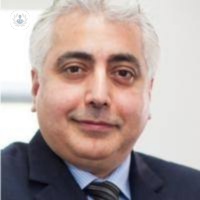What is Mohs surgery and how can it help treat skin cancer?
Written in association with:
What is Mohs surgery?
Mohs surgery, also known as Mohs micrographic surgery, is a surgical technique used to treat different types of skin cancer. The procedure involves removing thin layers of the skin cancer with some surrounding skin and immediately examine under the microscope until only cancer-free tissue remains.
This technique allows the removal of all the skin cancer tissue while causing minimal damage to the surrounding healthy tissue. This enhances the chance of cure and reduces the need for additional treatments as well as sparing tissue.

What can Mohs treat?
Mohs surgery is of particular use in:
- Cancers that have a high risk of recurrence or has an aggressive nature.
- Cancers located in sensitive places where maximal healthy tissue needs to be preserved like face, ears, nose and around the eyes.
- Cancers that have difficult-to-identify borders.
What is the procedure for Mohs?
Mohs micrographic surgery is an alternative to the classic local excision, which involves removing the cancer tissue with a margin of surrounding healthy tissue. The difference is that with local excision, both the surgeon and patient need to wait for a few days for the pathology report to be released. Depending on the report, the surgeon decides whether to re-excise or to follow-up.
The risks associated with Mohs surgery are similar to those associated with any surgical procedure and can be classified into:
- Risks associated with the anaesthetic agents (for example, allergic reactions, hypersensitivity, anaphylaxis).
- Risks associated with any surgical procedure (for example, infection, bleeding)
- Risks associated with the specific procedure the patient is having (for example, facial nerve injury when operating on face cancers).
Duration and other surgery details will be decided depending on the size and site of the lesion, and will be discussed in detail with the patient.
Are there any alternatives to Mohs surgery?
The huge advantage of Mohs micrographic surgery is that the patient would immediately know that all cancer tissue has been removed. However, depending on the extent of the lesion, ways to repair the defect might include the following:
- Allowing the wound to heal on its own (a process called healing by secondary intention).
- Using sutures to close the defect (primary closure).
- Shifting adjacent skin to cover the wound (skin flap).
- Using skin tissue from another body site (skin graft).
What is the healing process after Mohs like?
After having a successful Mohs surgery, the patient would need regular skin screening follow ups with his/her local GP or dermatologist. Although Mohs surgery has a high cure rate, there is still the risk of recurrence in a small number of patients.


